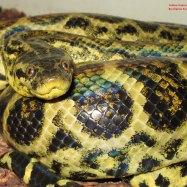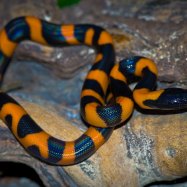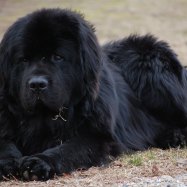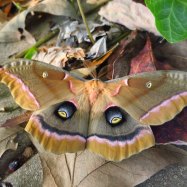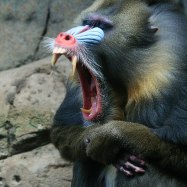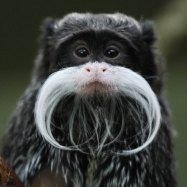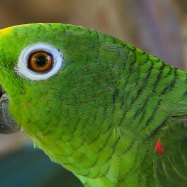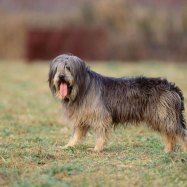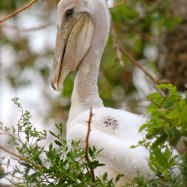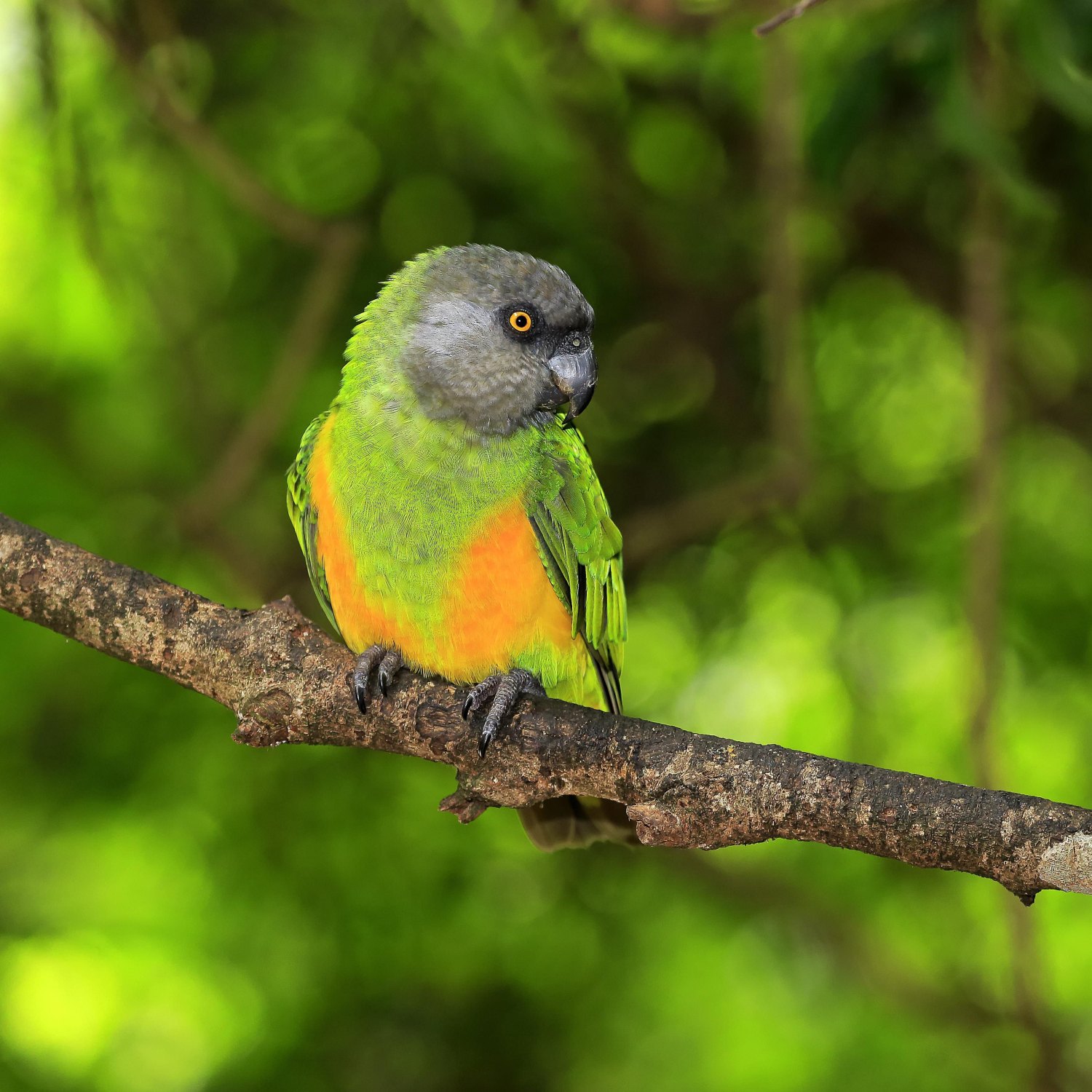
Senegal Parrot
23-26 cm
Meet the Senegal Parrot, a colorful and intelligent bird native to Africa. Known for their ability to mimic sounds and understand human speech, these medium-sized parrots make great pets. With a stocky build and a length of 23-26 cm, they are easy to care for and can live up to 30 years. Keep them healthy with a balanced diet of fruits, vegetables, and seeds. #SenegalParrot #AfricanParrot #PetCare
Animal Details Summary:
Common Name: Senegal Parrot
Kingdom: Animalia
Habitat: Savannas, woodlands, and forests
Saving the Senegal Parrot: A Story of Beauty and Struggle
The African continent is home to many diverse species of birds, but one particular species stands out for its distinctive beauty and resilience - the Senegal Parrot (Poicephalus senegalus). This extraordinary bird is native to West Africa, specifically from the country of Senegal, and is a prime example of nature's ingenuity and adaptiveness.This article will delve into the fascinating world of the Senegal Parrot, exploring its physical attributes, behavior, and struggles for survival. Let's take a closer look at this majestic bird and learn why it is worth saving Senegal Parrot.
The Anatomy of the Senegal Parrot
The Senegal Parrot belongs to the kingdom Animalia, phylum Chordata, class Aves, and order Psittaciformes, making it a close relative of popular pet birds like the macaw and cockatoo. However, unlike its larger cousins, the Senegal Parrot is a medium-sized bird, reaching an average length of 23-26 cm.One of the most striking features of this parrot is its vibrant coloration. Its body is predominantly green, with a gray head and yellow and red underparts. This unique combination of colors makes it a beautiful sight to behold. Additionally, the feathers of this bird are soft and velvety, giving it a plush appearance.
The Senegal Parrot also has a stocky build, which gives it a charming and endearing look. This bird has a robust beak that enables it to crack open a variety of nuts and seeds, making it an omnivorous bird. Their diet consists of fruits, insects, and even small reptiles, making them vital components of their native ecosystem Sei Whale.
A Home in the Savannas and Woodlands
In the wild, Senegal Parrots can be found in various habitats, primarily in the savannas, woodlands, and forests of West Africa. These birds are proficient flyers and have been known to migrate over long distances in search of food and nesting sites.Senegal Parrots are social creatures and live in pairs or small flocks, which provides them protection against predators. They also exhibit strong bonds with their mating partners and will often stay together for their entire lives, sharing the joys and challenges of raising their young.
Threats to Survival
Despite being a resilient and adaptable species, the Senegal Parrot faces several threats to its survival. One of the primary reasons for their decline is the illegal pet trade. These parrots are popular as pets due to their charming personalities and ability to mimic human speech. This demand has led to rampant poaching and illegal trade, which has significantly reduced their population in the wild.Habitat destruction is another significant threat to the Senegal Parrot. Deforestation, mainly for agricultural purposes, has reduced their natural habitat, making it increasingly challenging for them to thrive. As their natural habitat continues to shrink, the Senegal Parrot faces the risk of extinction.
The Need for Conservation Efforts
As with many endangered species, the Senegal Parrot's survival depends on human efforts to preserve and protect them. Several conservation organizations and initiatives have been established to address the various threats to this bird's population.One such organization is the World Parrot Trust, whose primary objective is to conserve and protect parrot species worldwide. They have active programs in West Africa, working with local communities to promote responsible pet ownership and reduce poaching.
Another crucial step towards preserving the Senegal Parrot is the establishment of protected areas for their conservation. These areas provide a safe haven for the birds to breed and thrive, without the threat of human interference.
How You Can Help
You don't have to be a biologist or scientist to play a role in saving the Senegal Parrot. There are simple yet impactful ways in which you can contribute to their conservation efforts.One of the easiest ways to support the Senegal Parrot is by raising awareness. Share this article with friends and family, and educate them about the beauty and plight of these birds. The more people know and care about the Senegal Parrot, the higher the chances of their survival.
You can also support conservation organizations such as the World Parrot Trust by donating to their cause or becoming a member. These donations and memberships go towards funding various conservation projects and initiatives that ultimately benefit the Senegal Parrot.
Lastly, if you’re considering a pet parrot, always opt for a legal, captive-bred bird instead of a wild-caught one. This ensures that no harm was done to any endangered species, including the Senegal Parrot.
In Conclusion
The Senegal Parrot is a remarkable bird that embodies the spirit of Africa. Its resilience and adaptiveness are an inspiration, and its beauty is a sight to behold. While it faces several challenges to its survival, it is not too late to save this incredible species.By working together and taking small but meaningful steps towards their conservation, we can ensure that future generations will continue to be amazed by the Senegal Parrot's presence in the wild. Let’s do our part in preserving their beauty and contributing to their survival.

Senegal Parrot
Animal Details Senegal Parrot - Scientific Name: Poicephalus senegalus
- Category: Animals S
- Scientific Name: Poicephalus senegalus
- Common Name: Senegal Parrot
- Kingdom: Animalia
- Phylum: Chordata
- Class: Aves
- Order: Psittaciformes
- Family: Psittacidae
- Habitat: Savannas, woodlands, and forests
- Feeding Method: Omnivorous
- Geographical Distribution: West Africa
- Country of Origin: Senegal
- Location: Africa
- Animal Coloration: Mainly green with gray head and yellow and red underparts
- Body Shape: Medium-sized parrot with a stocky build
- Length: 23-26 cm
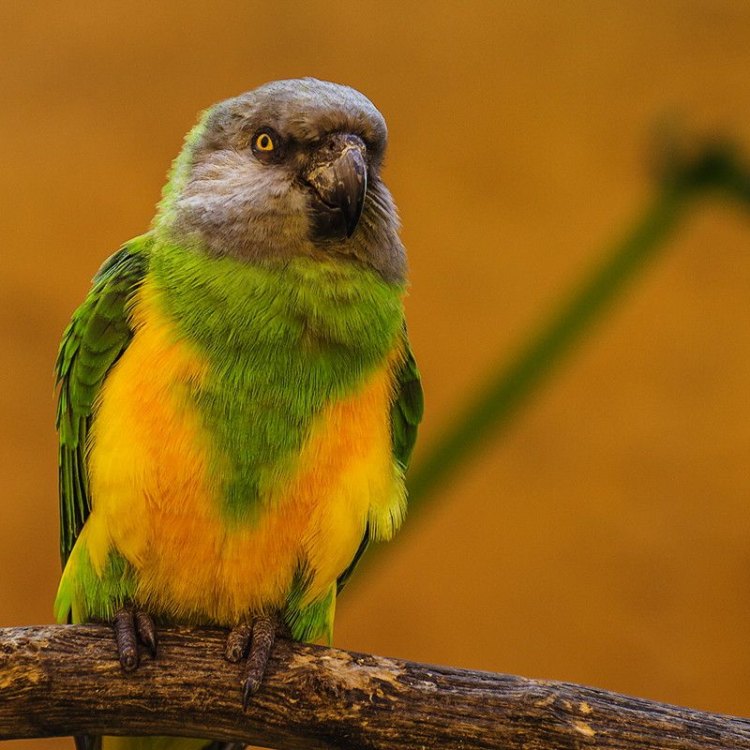
Senegal Parrot
- Adult Size: Small to medium
- Average Lifespan: 20-30 years
- Reproduction: Sexual
- Reproductive Behavior: Monogamous
- Sound or Call: Vocalizations include whistles, squawks, and mimicry of human speech
- Migration Pattern: Non-migratory
- Social Groups: Usually lives in small flocks
- Behavior: Intelligent, curious, and social
- Threats: Habitat loss, capture for the pet trade
- Conservation Status: Least Concern
- Impact on Ecosystem: Seed dispersers
- Human Use: Popular as pets and can be trained to mimic human speech
- Distinctive Features: Bright green plumage with gray head and yellow underparts
- Interesting Facts: Senegal parrots are known for their ability to mimic human speech and sounds
- Predator: Various birds of prey, snakes, and mammals
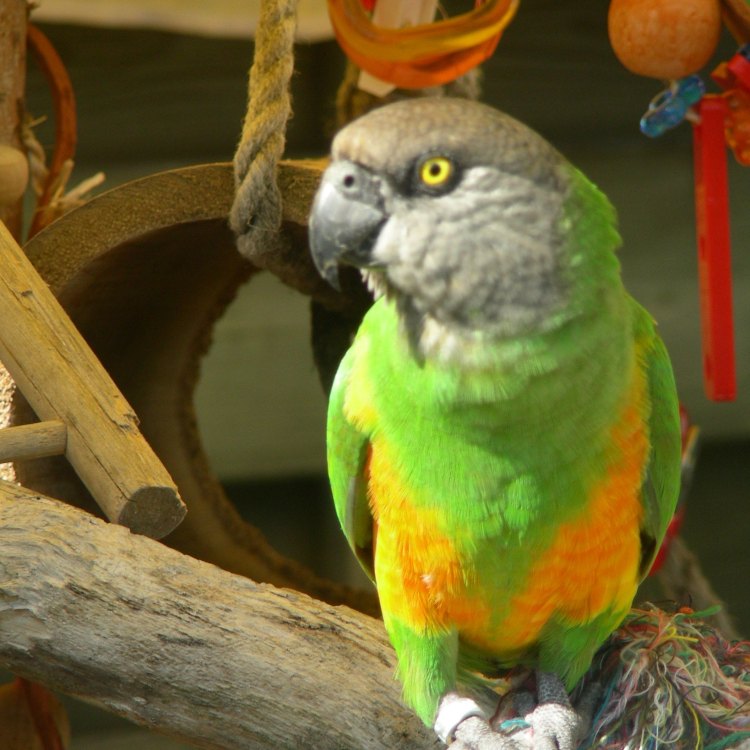
Poicephalus senegalus
The Versatile Senegal Parrot: A Curious and Social Avian Species
Nestled in the bustling forests and savannas of West Africa, the Senegal Parrot (Poicephalus senegalus) stands out with its vivid green feathers, gray head, and striking yellow underparts. This small to medium-sized parrot, also known as the Yellow-vented Parrot, has captured the hearts and minds of people with its intelligence, curious nature, and vocal abilities. In this article, we will delve deeper into the unique features and behavior of this avian species, its importance in the ecosystem, its significance to humans, and the threats it faces.Size and Lifespan:
The Senegal Parrot may be small in size, ranging from 9 to 10 inches (22-26cm) in length, but it has a big presence PeaceOfAnimals.Com. The average lifespan of this species is 20-30 years, making it a long-term companion for those who choose to keep it as a pet. With proper care, nutrition, and a stimulating environment, these parrots can even live up to 50 years!
Reproduction and Behavior:
The Senegal Parrot is a sexually reproducing species, with males and females forming monogamous pairs that last for a lifetime. These pairs engage in courtship behaviors, including dancing, feeding, and grooming each other. The female parrot will lay 2-3 eggs in a nest made out of leaves and vegetation, and the parents share the responsibilities of incubating the eggs and raising the chicks.
In the wild, Senegal Parrots usually live in small flocks of 10-20 individuals, but they may sometimes join larger flocks. They are known to be intelligent, curious, and social birds, often displaying playful behavior and forming close bonds with their human caretakers or their flock members. They even communicate with each other through a range of vocalizations, including whistles, squawks, and mimicry of human speech.
Migration and Habitat:
Unlike some other bird species, the Senegal Parrot is non-migratory, meaning it does not migrate to different locations for breeding or food. Their native range spans from Senegal and Gambia to Sudan and Ethiopia, and they can also be found in parts of Mali, Guinea, and Sierra Leone Sussex Chicken. These parrots make their homes in various habitats, including lowland forests, savannas, and even urban areas.
Impact on Ecosystem:
The Senegal Parrot plays a vital role in its ecosystem, primarily as seed dispersers. As they forage and feed on fruits, nuts, and seeds, undigested seeds pass through their digestive system, and they scatter them throughout the forest, promoting plant diversity and aiding in forest regeneration.
Threats and Conservation Status:
Unfortunately, the number of Senegal Parrots in the wild has been decreasing over the years due to habitat loss and capture for the pet trade. These parrots are highly sought after as pets because of their intelligence, ability to mimic human speech and sounds, and their striking appearance. The International Union for Conservation of Nature (IUCN) classifies the Senegal Parrot as "Least Concern" on its Red List of Threatened Species, but conservation efforts are still necessary to ensure the long-term survival of this species.
Human Use and Interesting Facts:
The unique features of the Senegal Parrot have made it a popular pet globally, and it is estimated that thousands of these birds are kept in captivity. They have a calm and gentle nature, making them well-suited for a domestic environment. With proper training and socialization, they can even be taught to speak and perform simple tricks.
One of the most outstanding characteristics of the Senegal Parrot is its ability to mimic human speech and sounds. They are highly intelligent and can learn a wide range of vocabulary. They can imitate sounds they hear in their surroundings, such as doorbells, telephones, and even laughter. And with dedication and patience, they can even learn to speak entire sentences!
Predators and Adaptations:
Like many other birds, Senegal Parrots have a variety of predators, including birds of prey, snakes, and mammals like wildcats and monkeys. However, they have developed some adaptations that help them survive in their natural habitat. Their bright green plumage serves as camouflage, blending in with the lush vegetation around them. They also have sharp claws and beaks that they can use to defend themselves against predators.
In human care, Senegal Parrots may face different threats, such as malnutrition, lack of mental stimulation, and neglect. It is essential for potential owners to do thorough research and understand the level of care and commitment required before bringing a Senegal Parrot into their home.
Conclusion:
From its brilliant green feathers and captivating personality to its crucial role in the ecosystem, the Senegal Parrot is a truly remarkable species. Its intelligence, social nature, and ability to mimic human speech have made it a beloved pet and a popular subject of research.
However, it is crucial to remember that these birds are not just pets; they are living beings that deserve love, care, and respect. By understanding and appreciating the unique qualities of the Senegal Parrot, we can work towards conserving their dwindling populations in the wild and creating a more harmonious relationship between humans and nature.
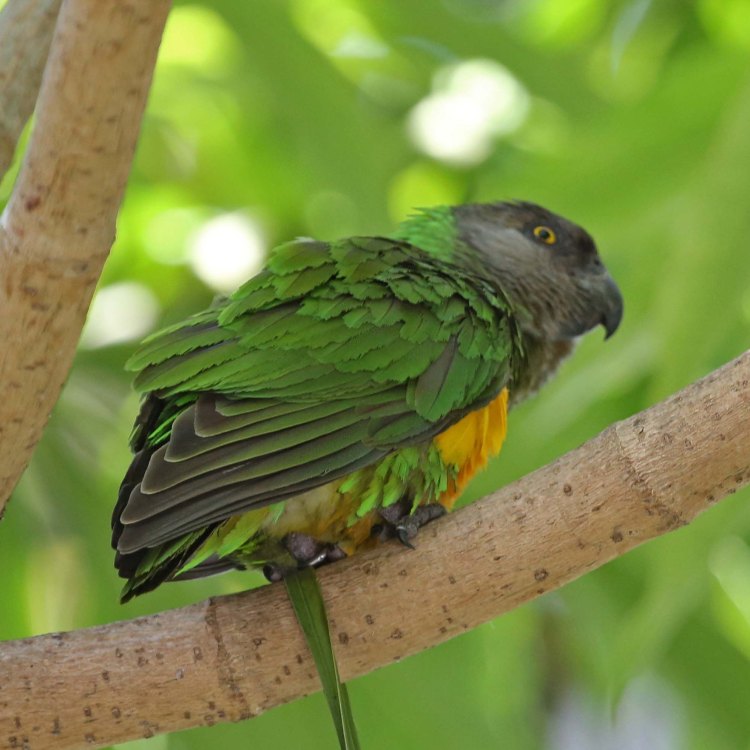
Saving the Senegal Parrot: A Story of Beauty and Struggle
Disclaimer: The content provided is for informational purposes only. We cannot guarantee the accuracy of the information on this page 100%. All information provided here may change without prior notice.

